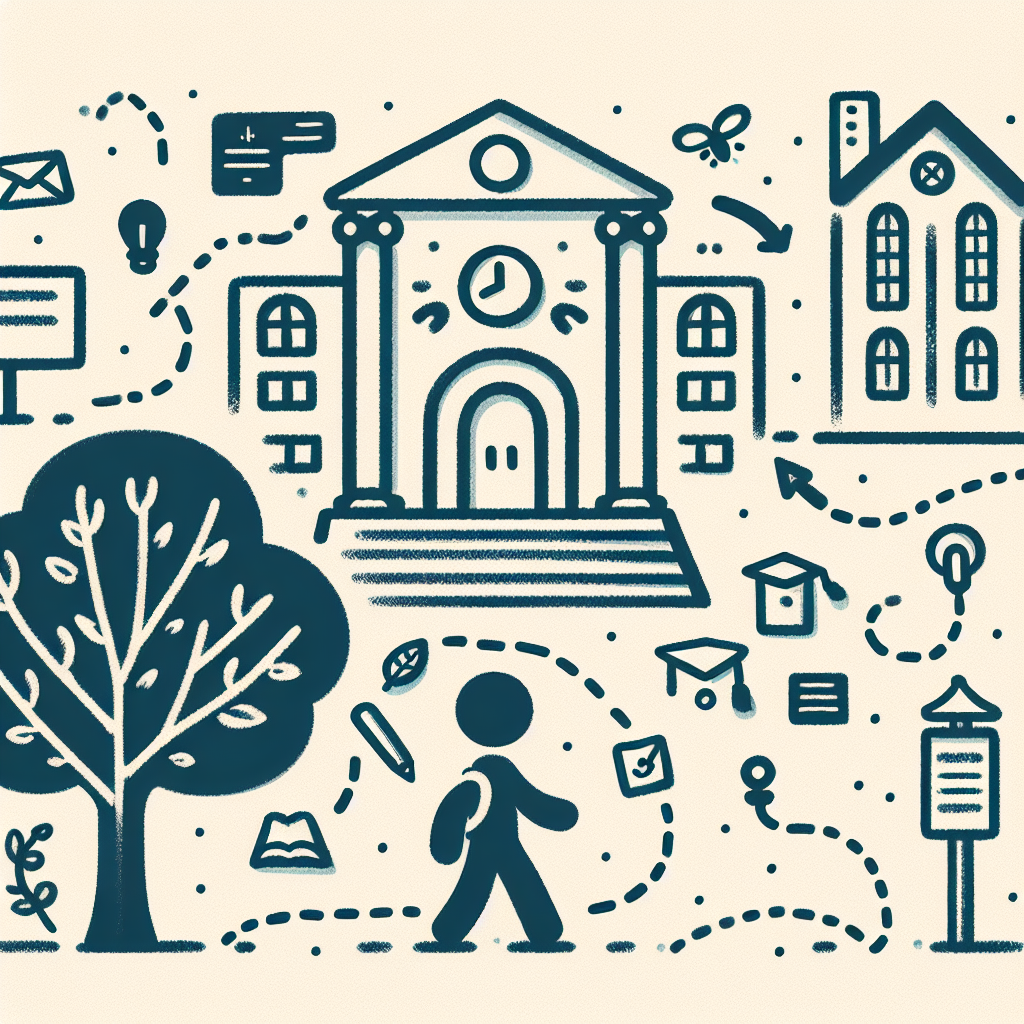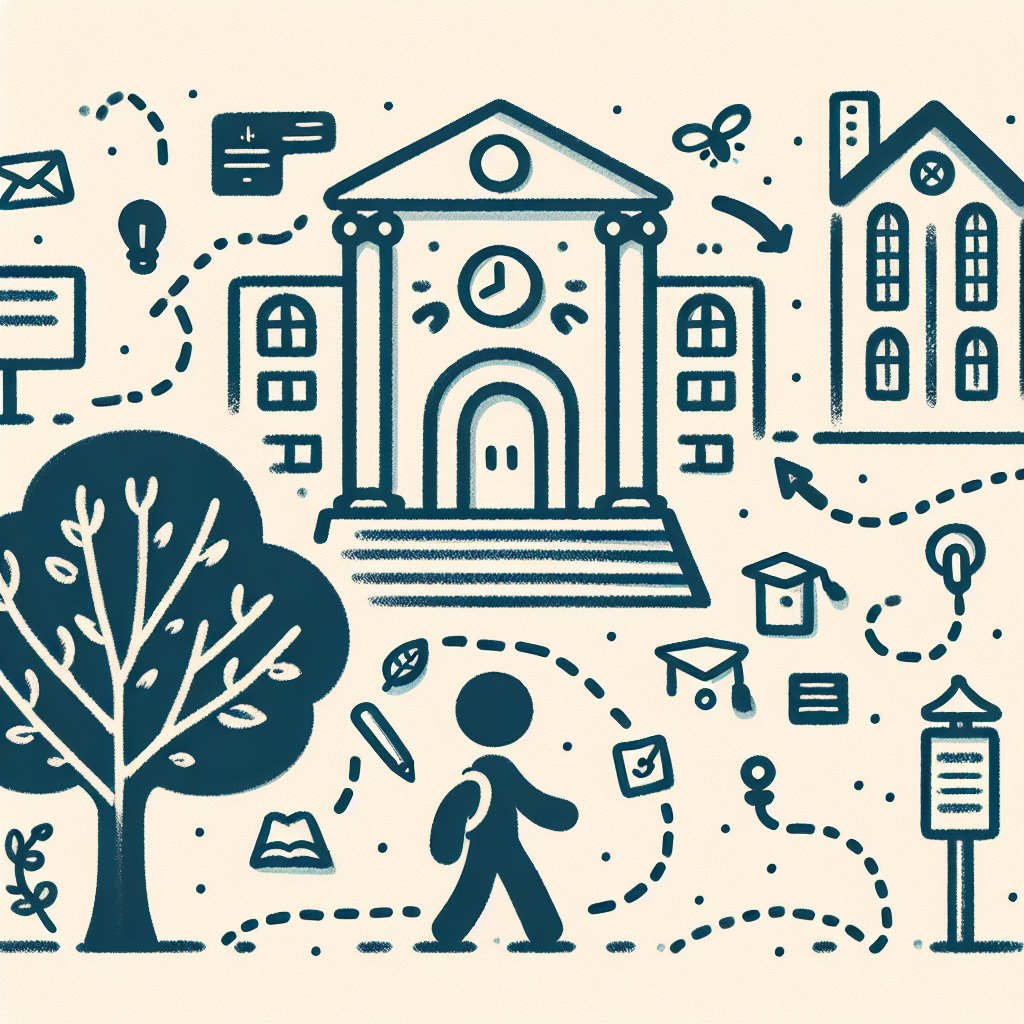Introduction: Why College Fit Matters
"College fit" refers to how well a particular college aligns with a student’s academic, social, and personal preferences. It includes factors like campus culture, class sizes, available majors, financial aid, and geographic location. Rather than focusing solely on prestige or rankings, college fit emphasizes a student’s overall satisfaction and success at a school.
Many students and families chase the idea of a “perfect college,” believing that there is one ideal school that will guarantee success. However, this is a myth. There are many colleges where a student can thrive, and what works for one person might not work for another.
Finding the right college fit can significantly affect a student’s experience. When students attend a college that matches their needs and values, they are more likely to be engaged academically, build meaningful relationships, and persist through graduation. In the long term, a strong fit can also lead to better career outcomes and personal fulfillment.

Step 1: Know Yourself First
Finding the right college fit begins with understanding who you are. Before browsing college brochures or planning campus visits, take time to reflect on your personal goals, values, and learning preferences.
Reflect on Personal Goals and Values
Start by identifying your academic interests and long-term career aspirations. Are you passionate about the sciences, arts, business, or another field? Knowing this can help narrow down colleges that offer strong programs in your areas of interest.
Lifestyle preferences also play a key role in college fit. Consider whether you prefer a large university or a small liberal arts college, an urban campus or a rural setting. Think about the type of campus culture you’d thrive in—are you looking for a vibrant social scene, a strong sense of community, or a focus on academics and research?
Financial considerations are also vital. Evaluate what you and your family can afford, and explore schools that offer strong financial aid packages and scholarship opportunities.
Assess Strengths and Learning Style
Understanding how you learn best can guide your college search. Some students excel in small seminar-style classes that encourage discussion, while others prefer the structure of large lectures. Reflect on what environment helps you stay engaged and perform your best.
Also, consider the support services available at each college. Look for institutions that offer tutoring, mentoring, and mental health resources if those are important to your success.
The College Board’s Find Your Fit – BigFuture tool emphasizes the importance of self-reflection in aligning college choices with your personal goals. Using resources like this can help ensure your college fit supports your academic and personal growth.

Step 2: Research and Compare Colleges
Finding the right college fit requires a detailed comparison of several key factors. Start by evaluating academic offerings and program strengths. Look for colleges that offer majors and minors aligned with your academic interests. Consider the availability of research opportunities, internships, and study abroad programs, which can enrich your academic experience and support your long-term goals.
Next, explore campus culture and student life. Investigate the range of clubs, organizations, and extracurricular activities available. A college with a vibrant social atmosphere and a commitment to diversity and inclusion can enhance your overall experience and sense of belonging.
Location and size also influence college fit. Decide whether you prefer an urban or rural setting, and consider the size of the student body. A smaller college may offer a lower student-to-faculty ratio, allowing for more personalized attention, while a larger institution might provide more resources and networking opportunities.
Institutional characteristics matter as well. Determine if a college is public or private, whether it has a religious affiliation, and what its historical mission is. These factors can shape the campus environment and academic focus. Additionally, review graduation and retention rates to assess student success and institutional support.
Use tools like the IPEDS Data Feedback Report for Albion College to dive deeper into college profiles. IPEDS data includes information on enrollment, faculty, tuition, and outcomes, which can help you make more informed comparisons and identify institutions that align with your ideal college fit.

Step 3: Match Fit with Selectivity and Outcomes
Understanding Selectivity and Your Chances
Finding the right college fit involves understanding how selective a college is and how your academic profile compares. Selectivity is typically measured by acceptance rates and influenced by admissions criteria such as GPA, standardized test scores, and extracurricular involvement. To ensure a realistic and strategic application plan, students should build a balanced college list that includes reach schools (where admission is less likely), match schools (where your profile is aligned with the average admitted student), and safety schools (where admission is highly likely).
Aligning with Outcomes and Expectations
College fit also depends on how well an institution aligns with your long-term goals. Key factors include career placement rates, graduate outcomes, and the strength of alumni networks. A college with strong postgraduate support and high job placement rates may offer a better return on investment and greater personal satisfaction after graduation.
Research Insights
According to the Study of Enhanced College Advising in Upward Bound – Application Impacts, targeted college advising significantly helps low-income and first-generation students apply to more selective colleges, increasing their chances of finding a good college fit. Additionally, the Study of Enhanced College Advising in Upward Bound – Enrollment and Persistence found that students participating in these advising programs not only enrolled in more selective institutions but also persisted longer in college—an important indicator of a strong college fit.

🛠️ Step 4: Tools, Resources, and Strategies
Finding the right college fit involves using a variety of tools and resources designed to help students make informed decisions. These tools provide data, insights, and support that guide students through each stage of the college search process.
College Search Platforms
Online platforms like College Board BigFuture, Niche, and College Navigator offer comprehensive databases that allow students to search for colleges based on location, major, size, cost, and more. These platforms also provide data on graduation rates, tuition, and financial aid, which are essential for evaluating college fit.
In addition to databases, virtual campus tours and student reviews give prospective students a better sense of campus life and culture. These insights help students assess whether a college’s environment aligns with their preferences and goals.
Advising and Mentorship
High school counselors play a key role in helping students identify schools that align with their academic strengths and personal interests. College access programs and community organizations also provide valuable mentorship and guidance, especially for first-generation college students or those from underserved backgrounds.
Early and ongoing advising is linked to improved college outcomes. Regular check-ins with advisors help students stay on track with academic planning, application timelines, and scholarship opportunities, all of which contribute to a better college fit.
NCES Longitudinal Research
Findings from the National Center for Education Statistics (NCES) highlight the importance of academic preparation in achieving college success. According to longitudinal research, students who engage in rigorous high school coursework and are held to high academic expectations are more likely to be ready for college and persist once enrolled. This underscores how academic rigor and preparation are fundamental components of determining and achieving college fit.

Step 5: Making the Final Decision
Campus Visits and Virtual Tours
Visiting campuses—or taking virtual tours—can provide valuable insight into college fit. When touring, pay attention to the campus environment, class sizes, housing options, and available student services. Ask questions such as: What academic support is available? What is the student-to-faculty ratio? Are there opportunities for undergraduate research or internships? Talk to current students to get honest perspectives on campus life, academics, and social culture. Speaking with faculty can also help you understand the academic rigor and teaching style at each institution.
Comparing Financial Aid Packages
Financial aid packages vary widely, so it's important to understand the difference between sticker price and net price—the actual cost after aid is applied. Review each offer carefully, analyzing how much is covered by scholarships and grants (which don’t need to be repaid), and how much comes from loans or work-study programs. Consider the long-term impact of student loan debt and whether the aid package makes the school a realistic financial fit.
Trusting Your Gut and Prioritizing Fit
After gathering all the data, take time to reflect on how each school aligns with your goals, values, and needs. College fit goes beyond academics—it includes social environment, location, extracurricular opportunities, and personal well-being. Trust your instincts when a college feels right or wrong. Remember, choosing a school is about finding a place where you can thrive both personally and academically.

Conclusion: College Fit as a Lifelong Foundation
College fit is a deeply personal and multifaceted decision. It goes beyond rankings or prestige to include academic programs, campus culture, support services, and alignment with personal values and goals. What works for one student may not work for another, making self-awareness a critical part of the process.
A good college fit supports more than just academic success—it fosters personal growth, well-being, and long-term fulfillment. Students who feel connected to their campus environment are more likely to stay enrolled, graduate on time, and carry those positive experiences into their careers and lives.
To identify this fit, students should combine data—such as graduation rates, student-to-faculty ratios, and financial aid packages—with thoughtful reflection on what they want from their college experience. This balanced approach helps ensure that the choice made is not only informed but also personally meaningful.
Ultimately, choosing the right college fit lays the groundwork for a successful and satisfying journey through higher education and beyond.

Appendix: Resources and Links
The following resources offer valuable data and tools to support students, families, and counselors in assessing college fit:
- BigFuture – Find Your Fit: An interactive tool by the College Board that helps students explore schools based on academic, social, and financial fit criteria.
- IES Study – Application Impacts: A report by the Institute of Education Sciences (IES) examining how personalized advising influences students' application behaviors and their understanding of college fit.
- IES Study – Enrollment and Persistence: This study focuses on how advising interventions affect where students enroll and how long they stay in college—key factors in evaluating college fit.
- NCES Research – College Readiness: National Center for Education Statistics (NCES) data on how well students are prepared for postsecondary education, which influences their ability to find a suitable college fit.
- IPEDS Data Feedback – Albion College: A sample institutional report from the Integrated Postsecondary Education Data System (IPEDS), offering detailed statistics on enrollment, outcomes, and costs to help evaluate college fit for a specific institution.














